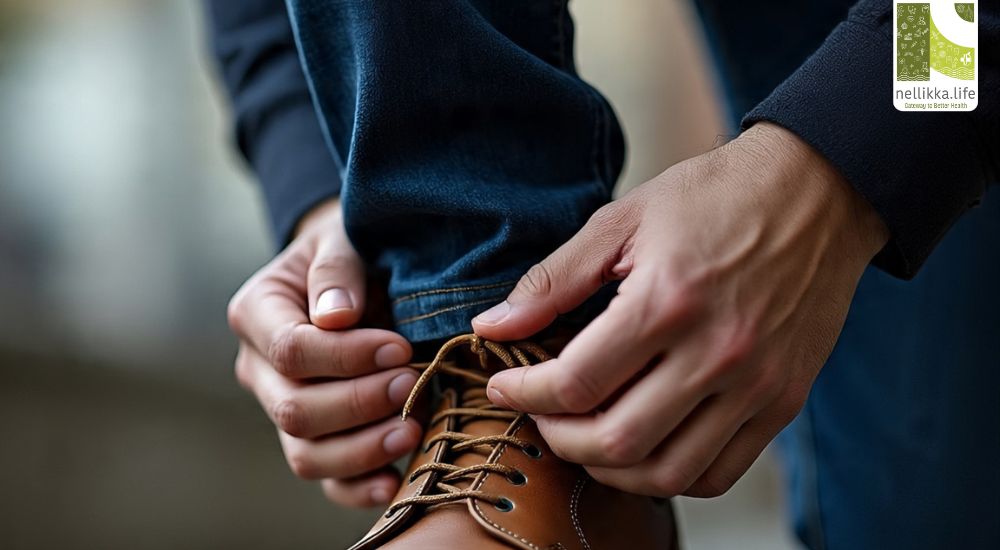The Science of Shoe Fit: Why It Matters for Your Whole Body

Most of us have been guilty of wearing shoes that are too tight, too loose, or simply not designed for our feet. It may seem like a minor inconvenience, but ill-fitting shoes can do more than just cause discomfort—they can have lasting effects on your feet, posture, and overall health.
Let’s explore what science says happens to your body when your shoes don’t fit right.
1. Foot Problems Begin First
Blisters and Corns
When shoes are too tight, they create friction against the skin, leading to blisters. Repeated rubbing causes hardened skin (corns and calluses) as the body tries to protect itself.
Ingrown Toenails
Narrow shoes, especially those with pointed toes, push toenails inward. This can cause painful ingrown toenails that may require medical intervention.
Bunions and Hammertoes
Shoes that crowd the toes can alter bone alignment over time, increasing the risk of bunions (a bony bump near the big toe) and hammertoes (abnormal bending of smaller toes).
2. Circulation Takes a Hit
Shoes that are too tight restrict blood flow to the feet. Poor circulation can lead to swelling, numbness, and a tingling sensation. In people with conditions like diabetes, this can worsen nerve damage (neuropathy) and increase the risk of foot ulcers.
3. Muscle and Joint Strain
Arch Pain and Plantar Fasciitis
Shoes with poor support or an incorrect fit can strain the plantar fascia—the ligament that supports your arch—leading to chronic heel pain known as plantar fasciitis.
Knee, Hip, and Back Pain
When your feet aren’t properly aligned, your body compensates by changing the way you walk. Over time, this misalignment can strain the knees, hips, and lower back, increasing the risk of joint pain and early arthritis.
4. Posture and Balance Are Affecte
Shoes that are too loose cause instability, while tight shoes may force unnatural walking patterns. Both can throw off balance and posture. Poor posture doesn’t just make you look hunched—it also puts excess stress on your spine and core muscles, leading to fatigue and discomfort.
5. Increased Risk of Injuries
- Ankle Sprains: Shoes without proper support or fit increase the chance of twisting an ankle.
- Falls: Ill-fitting shoes are a leading cause of slips and falls, especially among older adults.
- Stress Fractures: Repeated strain from improper footwear can weaken bones, causing tiny cracks known as stress fractures.
6. Long-Term Deformities
Over years, constant pressure from the wrong shoes can permanently change the shape of your feet. This includes collapsed arches, claw toes, or worsening bunions—all of which may eventually require surgical correction.
How to Choose the Right Shoes
- Measure your feet regularly: Foot size can change with age, pregnancy, or weight fluctuations.
- Shop at the right time: Feet swell during the day—try on shoes in the afternoon for the best fit.
- Look for toe room: There should be about a half-inch (a thumb’s width) between your longest toe and the front of the shoe.
- Prioritise support: Good arch and heel support can prevent strain on the foot and body.
- Avoid prolonged high heels or narrow-toe shoes: Reserve them for short-term wear, not daily use.
Wearing the wrong shoes may seem harmless at first, but over time, the consequences can ripple through your entire body—from your feet to your spine. The science is clear: good footwear isn’t a luxury, it’s a necessity for long-term musculoskeletal health.
Your shoes are the foundation of your body. Treat your feet right, and your whole body will thank you.
Ill-fitting shoes can cause more than sore feet—they can disrupt circulation, damage joints, harm posture, and even lead to chronic pain. Choose wisely, because every step you take starts with your shoes.




